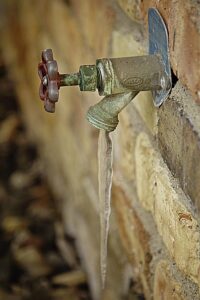Waterproofing your Outdoor Faucet

During the winter months, freezing temperatures can cause much damage to our water lines but there is hope, by taking action we can ensure that our water lines are protected from the cold harsh winter. Below we will be discussing a few steps that are effective and have proven to give good results during this time of the year so continue reading as we take a closer look at how to winterize outdoor faucets.
When is the Best Time to Winterize Our Outdoor Faucets
The best time of the year to winterize our outdoor faucet is during the fall months once you’re finished with it, the spigot can remain turned off until the following spring. Winterizing your outdoor faucet does not take that long, just a couple of minutes and you are all done.
Tools You Will Need
- Flashlight
- Tongue and groove pliers
- Adjustable wrench
- Bucket
- No-slip-grip work gloves
- Outdoor faucet winter cover
Safety Comes First
Safety is always first when carrying out any job or task, when working in these enclosed areas may have a ceiling that is low and other cramp conditions. As you move in this cramped space be careful and move slowly because what you don’t want is to cause any injury to yourself like bumping your head etc… With the help of a flashlight take advantage of this time as well to look for insects and rodents that are seeking to overwinter, rotting wood, pipe leaks, and moldy wood.
1. Shutting Off the Water Supply
In most cases the water line that connects to or feeds the outside faucet has a valve that is responsible to turn the water off and on, the shut-off valve should be located in the crawlspace or the basement a few feet away from the wall. Before shutting it off make sure that this valve only controls the outdoor water faucet, once the valve has been shut off inspect for any signs of water leaks.
2. Disconnect the Hose
If a hose is connected to the faucet then proceed to disconnect it, next allow all the water from the hose to drain. Now roll the hose up and store it in a safe place.
3. Draining the Faucet
Once the water supply has been turned off in the basement proceed to open the faucet that’s outdoors so the water can drain completely from the water line. However, if there is no shutoff valve in the basement then skip this step.
4. The Use of an Outdoor Faucet Cover
Outdoor faucet covers that are insulated are so important they act as an extra layer or shield to protect conventional faucets during the harsh winter months. When installing the cover ensure that the protective cover is tightly sealed around the faucet.
5. Insulating Exterior Pipes
Exterior pipes can also be insulated with pipe insulation, these insulate sleeves fit right over the pipes. Protective sleeves can be purchased from your hardware store or garden center.
The final word on how to winterize outdoor faucets
Winterizing your faucet is that simple all it takes is a few minutes and you are done, this is a great way to protect your faucet from the harsh winter weather and also to look for leaks and other concerns that may be damaging to your home as we also covered. So go ahead and take these steps I am sure you will be glad that you did because these steps can help you to save dollar-wise.
About the author
Norman loves being in the garden, both at home and for his job....
he is 'Natures Little helper' being outdoors, growing his vegetables and flowers from an early age.
Now having spent over 22 years in the profession he want to give some of his knowledge to others...
his vast array of hints and tips you will find scattered over this site will help you no end growing plants in your garden.

Many thanks for this valuable and detailed post about Winterize Outdoor Faucets. This is really a very important post at this time. At this time, Tamati’s posts are most needed. I did this last year with great difficulty. But with this post of yours it can be done easily. Keep posting like this.
You are welcome and I am happy to have helped you!!
Each weather has its advantage and disadvantage. One of those things we have learnt to live with is adjusting ourselves to our weather conditions. The effect of damages on our water lines can be devastating, so taking precautionary measures is a plus. Thank you for this intelligent outline to help us keep the flow of water in all season
You are welcome, I am so happy to have helped.